The Carrier-IQ scandal still hasn’t blown over, but now a pro-consumer alternative – called Carrier Coverage – has found its way to Android Market. The app collects real data from real users to piece together an accurate and unbias picture of carrier coverage, segmented by location, carrier, and device. If the app gains a critical mass of users, it could become the defacto standard for independent carrier coverage information. The team is already planning additional features such as heatmaps, data speed tests, 3G vs 4G comparisons, and international support.
Is the data accurate? Not yet. That’s why the Carrier Coverage Team is asking users for your help, patience, and participation:
“It’s almost a chicken and egg scenario. It’s a Catch 22. You need the critical mass for the service to fulfill it’s potential, but you need a great service in order to attract a critical mass. We think we have a great service. We hope people will look at the app, look at the website, realize we’ve put a lot of thought and effort into the concept, and help us achieve what we’ve set out to do.” – Steve Albright, Lead Developer
One killer feature, which the team hopes to launch in the coming months, is reporting based on specific addresses. That’s right: pop in your home address, school address, work address, or any other specific address and Carrier Coverage will give you a summary of important info. This could be particularly helpful to determine whether or not your phone will get service during a vacation or road trip.
 Specific address support isn’t yet enabled – the complexities of recording and querying millions of records make the feat difficult to accomplish – but the Carrier Coverage team hopes to include this feature (along with heatmaps) in an update this year. However further feature development will hinge on how quickly the app catches on: Carrier Coverage has already been in development for over a yearand hasn’t been cheap or easy. Hopefully, with support from the community, the app and site will flourish, allowing for continued development.
Specific address support isn’t yet enabled – the complexities of recording and querying millions of records make the feat difficult to accomplish – but the Carrier Coverage team hopes to include this feature (along with heatmaps) in an update this year. However further feature development will hinge on how quickly the app catches on: Carrier Coverage has already been in development for over a yearand hasn’t been cheap or easy. Hopefully, with support from the community, the app and site will flourish, allowing for continued development.
So how will a free app with zero ads make money? The team hopes the companion website, located at CarrierCoverage.com, will have enough sponsorships and ad revenue to pay the bills. The website displays overview information for every carrier, device, and location that have been recorded by contributors. Currently, only the United States is supported, but additional countries and regions will eventually be added to the mix.
The Carrier Coverage Android App
On launch, Carrier Coverage is only available to Android users in the United States (download link). Because Android has hundreds of devices available from different manufactures and carriers, it offered the ideal landscape for Version 1. Hopefully an iOS and Windows Phone version will follow, but again, this hinges on the success of the project. Let’s take a look at the apps main screens:
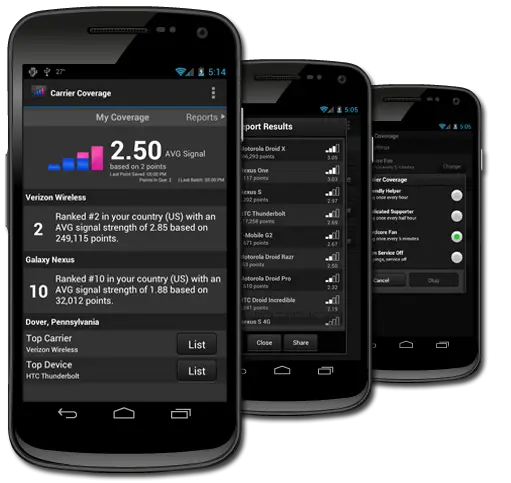
The first time you open the app, you’re prompted with terms of service to which you must agree. The app collects sensitive data such as your location, but unlike Carrier-IQ, you’re told exactly what you’re contributing and can even adjust settings to turn data collection off completely. After agreeing to the terms, you’re popped over to the “My Coverage” screen.
My Coverage
The My Coverage screen keeps a running tally of your data points, providing you with your average signal strength over the life of the app’s use. I’ve currently got a 3.73 Average Signal based on 1878 data points- not bad. This count is based on my personal data, and just below, we see how my carrier and device are performing based on aggregate data collected by all users combined.
This is interesting to see how your personal average compares to users with the same carrier/device in your immediate surroundings. If you want to dive into the details, you’ll see a Top Carrier and Top Device for your location, with a “List” button for the complete rankings. If you’re looking for data not found on the My Coverage screen, swipe over to the “Reports” screen.
Reports
On the reports screen, you’re able to create a custom report based on the specific data you’re seeking. You’re able to alter three options:
- Location
- Report Type (Carriers or Devices)
- Search Boundary (City, State, Country)
After running the report, you get a complete list of carriers or devices in the region and proximity selected, along with signal strength and data points for each item on the list. The “Share” button is a neat little feature that allows you to quickly e-mail the information, with a link for more detailed info, to anyone you want. Having an argument with your friend? Suggesting a carrier/device combo to a family member? Run a report and shoot them the details in a quick and helpful e-mail. Or just brag to your friends why your phone and carrier are better than theirs!
Settings
Press the 3 dots in the upper right hand corner of the app and you’ll get sent to a helpful settings pages that allows you to set some very important options. Most notable are the participant settings:
- Friendly Helper (once per hour)
- Dedicated Supporter (once every half hour)
- Hardcore Fan (once every 5 minutes)
- Turn Service Off (Do not contribute)
Pinging once every hour should have an extremely small impact on your battery life, but still lets you contribute to the project. Every data point counts so providing this range is a nice feature. You’re even able to opt-out of participation completely, a nice touch for those worried about privacy or nutty conspiracy theories. Users can also disable pinging when their battery is low, toggle the notification icon, check for app updates, view the changelog, read the user agreement, watch a promo video, and enter debug mode.
Will the concept take off?
This depends largely on the users that choose to download. Hopefully, the app won’t get flooded with 1-star ratings and “no data in my area” comments- in order to display helpful and accurate data, lots of users need to believe in the concept rather than simply downloading the app for immediate glory. The first couple months should tell the story: with enough support and momentum, Carrier Coverage could become a truly powerful tool for consumers.
The Future of Carrier Coverage
Round 1 of Carrier Coverage keeps things simple, displaying only the most critical data. As more information is collected, it will allow for more detailed reporting, filtering, and sorting. Some of the features the Carrier Coverage team hopes to enable in the future include:
- Heatmaps
- 3G vs 4G reports
- Data speed reports
- Reports for specific addresses
- International Support
- Selectable timeframes and trends
Go ahead. Download the app. Start contributing. See how it affects the data on the website. Hit up the forums and provide feedback, opinions, criticism, questions, and whatever else you may be inspired to share. Suggest the app to your friends. Help get the ball rolling and let us know what you think in the comments below!
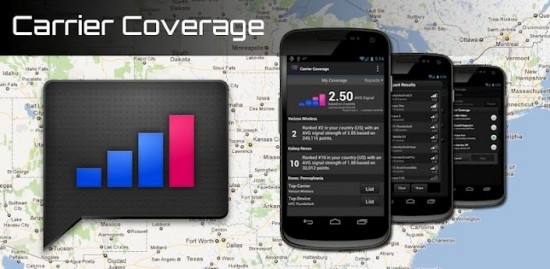
Carrier Coverage was created by Neverstill Media, LLC, who also own Phandroid.com, AndroidForums.com, and AndroidApplications.com among other web and mobile properties.


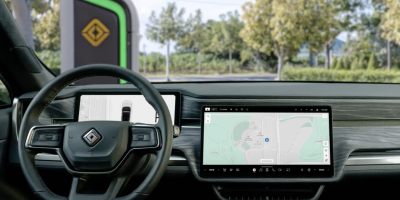
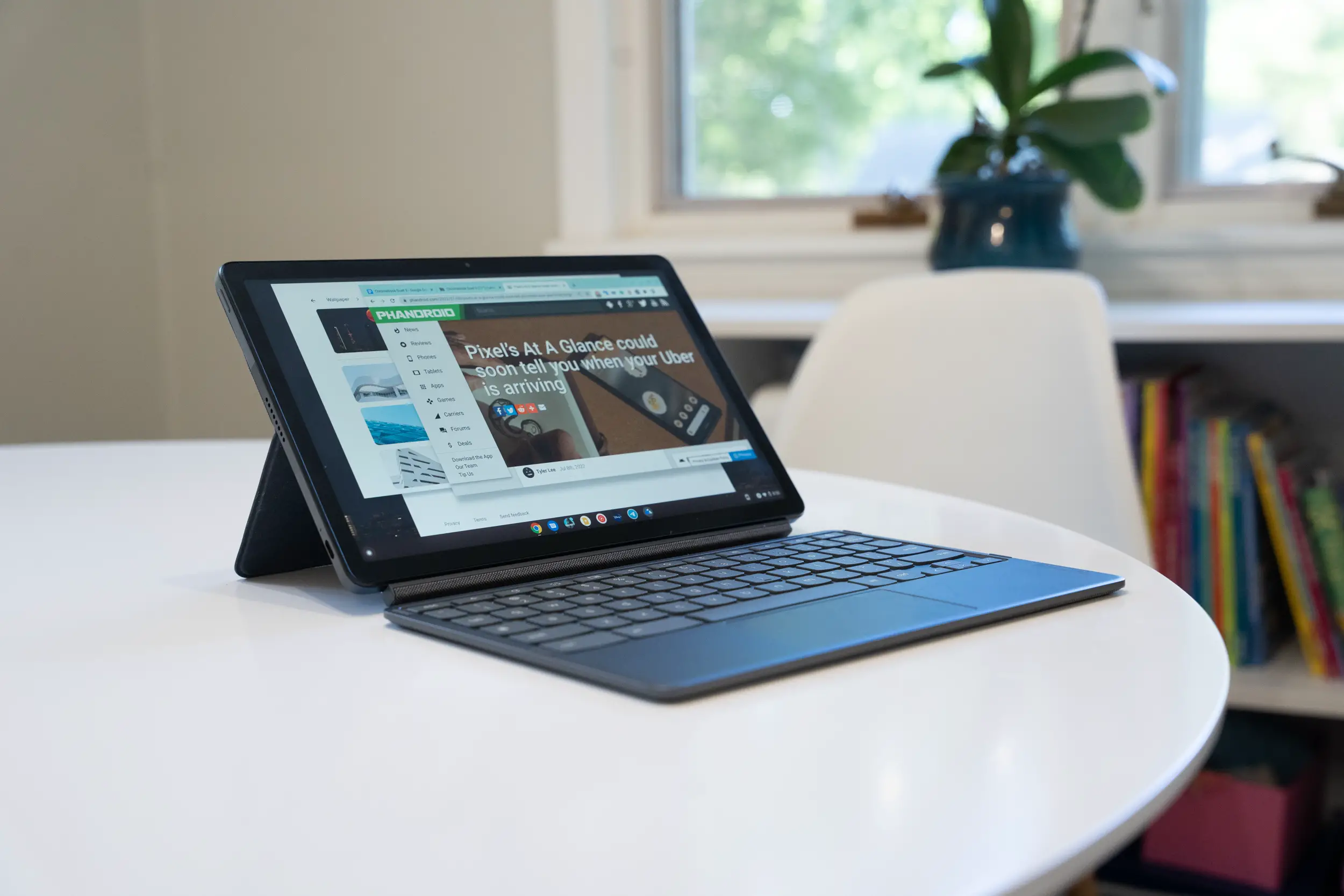

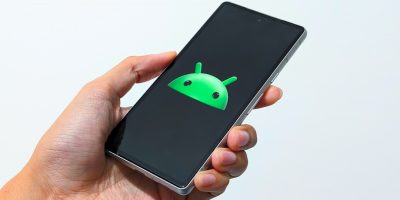





Wait a minute , Carrier-IQ gets slammed for this and now a developer wants us to do it voluntarily ? GTBK
Carrier-IQ got slammed for it because they were collecting the data without disclosure. Not to mention, consumers never got to benefit from the actual service because it got sent privately back to the OEMs and carriers themselves. Carrier Coverage offers a front facing consumer interface so people actually benefit from the data they submit (as do others).
But it is still data farming .
Data Farming: The term Data Farming comes from the idea of planting data in the simulation and parameter/value space, and then harvesting the data that results from the simulation runs.
So no… its not.
We collect data from lots of users to in the end provide a free public service that everyone can benefit from… even if you dont even install the app, you can still see the reports on carriercoverage.com.
Are you sure you’re not hating on root because you know Root users are likely to have adblocking installed? If that’s the case, then just come out and say so.
Root users can alter their system info. That means they could change their carrier to be “Yo Mama” with a device named “Eggrolls are tasty”. Something tells you that you wouldn’t trust a site very much if they allowed users to submit data like this…
That is the one and only reason we don’t use rooted device/carrier info in our reports.
Not hatin over here.. my main device is actually rooted. I spent HOURS looking at data to try to find at least one valid way to confirm rooted devices… unfortunately I have detected in every possible field the sdk has to offer, at least one example of it being modified some way.
As we get more rooted data, we will continue to work on this issue and try to make it as valid as non rooted…or close to with a small margin of error. Once this is done, I am sure we will try to offer this data to the public in some way or fashion.
LMAO…you just asked the rooter of all rooters if he is hating on root….too funny!
What’s Carrier IQ? How can I find it on my Nexus?
Not compatible with ICS.
It is compatible with ICS.
I think it’s funny that it’s not compatible with my Captivate running ICS, but it is compatible with my WIFI ONLY Galaxy Tab, also running ICS…. I wonder what type of metrics it could get from my WiFi tablet?
I noticed the same thing, but replace wifi tab with wifi transformer. My phone would probably give better cell data :p
Why would they not accept data from rooted phones? Wouldn’t they want to collect data from advanced users?
We do accept data from rooted users but the rooted data will not be in reports. The reports need to have data integrity and if we included rooted devices in the reports, we will loose this.
In the future we will most likely add an option to also view data from rooted devices but our main goal right now is 100% data integrity.
How would root skew the data?
With root you can modify any of the main system fields such as the build information, phone fingerprint, etc. Most custom roms (from years of testing) replace this data with custom slogans, names, etc. Without having 100% accurate model and products of what devices are submitting data, the data will not be valid.
With that said, we are still collecting data and plan on continuing to analyze how we can use this data. I think in the long run you will see filters with one being to include rooted data.
Hope that help!
I couldn’t find the forum post you were talking about so I’ll put this here: I think the filter sounds like a great idea. As previously stated root users are pretty much a huge part of your demographic and not using that data would be unfortunate. Most carriers (as far as I know) send cell data through some sort of proxy; this could be used to help determine the correct carrier. Also, upon first startup have the app attempt to match up the carrier/phone to a database. If the phone isn’t found you could have a popup asking the user to select the correct device. This is sort of similar to an app like ROM manager, it tries to verify your phone, and makes you select it to be certain, and if it can’t it asks you to select it.
Please do add that option to view rooted data, as well as how little us evil users deviate from the unrooted mean.
I’m glad they don’t. That way the data they collect is accurate.
http://www.opensignalmaps.com with app also being doing this for ages. Not limited to US, heatmaps already live
edit: nvm. :)
No it isn’t :)
There are a few other apps/sites out there that are doing simular things…like the one above. I can ensure that we were in development of this way before most of them out there.
Our key focus is on data integrity. With no integrity ..what are the heatmaps worth? Also read right under their heatmaps: “Note data is incomplete and not updated in realtime”. So really, those heatmaps tell you nothing valuable.
Our first approach was heatmaps but we quickly moved to making sure our data reports are the BEST first. Eye candy and extra filtering features, etc will all come later… if we get all of your support :)
Ok, sounds interesting. I’ll look forward to using it if it gets a global rollout. I’m a big fan of the concept of user generated signal data – very empowering for the consumer.
Yes but CIQ got slammed because it was hidden from the end user and we had no way to opt out. At least if you use this app, you are voluntarily and knowingly taking part in it
I see nothing wrong with that.
I had this installed on my phone months ago – it must have been pulled and re-released.
Edit: Nope – closed beta last July
https://phandroid.com/2011/07/21/carrier-coverage-private-beta-download/
A Carrier Coverage OG! How do you like the current version and website compared to previous builds when we were in beta?
Never really checked out the website – they both seem fine to me, but I do see some nice touches on the final version…haven’t used it enough yet, but I’m sure it’s better on the back end as well!
Recognizes root users and doesn’t include their data for statistics, must feel the data is skewed by custom roms.(?)
See above my other comment.. we collect but are not using it.
Data would be skewed if we included custom roms which could cause easy confusion of what devices are sending data. Not to mention, a custom ROM with a custom radio, kernel, etc are all factors of cell reception or reporting. We will continue to monitor data from rooted devices that are supporting so maybe in the future you will see some support for this :)
Don’t agree. Most of the users most likely to be into collecting such data are rooted users. I think if someone wanted to cheat the data, then they could also easily hide that the phone is rooted. It’s not hard.
I say, don’t collect device model (since that may be incorrect) but at least collect the coverage info. Root does not magically give super-power coverage or cause bad coverage.
As it stands, I will probably not use the app at all because it has no data on my carrier in my area. If I could CONTRIBUTE that data, I would use the app. Since you have made the stupid decision to discriminate against root users, I will not be using the app.
Hey Alvin. We appreciate your input, and while it was a very hard decision to make, I don’t think it was stupid. You’re absolutely right that rooted users are the very type of people that are most likely to contribute, but we couldn’t compromise the integrity of the app for the sake of getting as many users as possible.
The most important element of Carrier Coverage is to have accurate data. Rooted users, by nature, cause a lot of grey areas. If you saw some of the crazy carrier and device names being reported, I think you’d understand. Not to mention, some ROMs cause poor performance and reception issues, for which the carriers and manufacturers themselves shouldn’t be responsible.
We’re still collecting rooted data, but felt that including it in our reports without a concrete way of ensuring it’s accuracy would be a disservice to users seeking coverage information.
If you visit the Carrier Coverage Forums, there is a section for suggestions and feedback. I’d love to hear any ideas you have about either (1) including rooted data in our reports, or (2) creating an alternate section for rooted user info and reporting.
Thanks for taking the time to comment!
I ran Carrier Coverage for a few months last summer while on CM7, and considered reinstalling it on my CM9-alpha device when I read this article, but after reading some comments and learning that rooted device data is just being ignored, I’ll pass (and pass on recommending it).
The VAST majority of rooted users DO NOT change their device/carrier naming just for the fun of it, so throw the outliers out and keep the rest.
I agree with the other commenter:
1) You should AT LEAST be using rooted users’ info for filling in sparse coverage areas to benefit everyone. Make an option.
2) If you want to create a separate category just for rooted users, that’s fine, but it’d also be nice if you showed the tiny deviation from the norm that said rooted users represent. (e.g.: out of a large enough sample size, rooted users had a statistically insignificant 0.13% better average signal strength in time square, NYC, and 0.17% worse signal in Brooklyn)
Then again… it’s probably just easier to ignore the pleas of the noisy, poisonous root minority. Blessed be thy stock ROMs and average joes.
Hey Jason,
We 100% aren’t ignoring root. We are collecting the data and hope to use it once we have a solid game plan. But, we felt it would be a disservice to lazily implement a solution at the cost of the entire service/concept.
Your idea of initially using rooted data to fill in service gaps is a good one. Perhaps we can offer a toggle button to include or disclude rooted information. But including this information is NOT as easy as a check box for yes or no. We aren’t simply discarding rooted users… a LOT of thought has gone behind this app and its something we felt we had to do.
Hopefully you understand and will continue to offer your feedback.
Root Metrics has a good site and iPhone/Android apps.
http://www.rootmetrics.com/
Root Metrics does a nice job and there are other worthy competitors as well. I think competition is good… hopefully it’ll push the group of apps forward as a whole.
Don’t miss the last part and only reason rob Jackson has written this so pretty like
Carrier coverage written by the people who own this site phandroid
Keep your eyes open. I will never run this willingly. Plus it slows your phone down really badly.
No it doesn’t.
when sprint/htc removed ciq my phone took a huge jump in both benchmark tests I use .. IT DOES SLOW the phone way down.
This may be the turn for phandroid. U r now pushing software written by your owners, we all know how that goes. pretty soon no more good news just a bunch of promoting your own stuff to make more money. sad day
This app is NOT ciq. It’s simular in concept but is not developed anywhere close to what ciq is. Why not test the app, provide feedback and if your phone is running slower we can address your specific device issues?
This app was written by me…and I am part of Phandroid, so I think I can comment on this. Phandroid invested time and money into this app so I would hope most would look at this situation and be pleased what Phandroid is stepping up to accomplish. Phandroid is a news site related to Android.. why wouldn’t we make a post on this? There will NEVER be a time that all we do is push our own software… and I think everyone obviously knows this from the history of Phandroid.
You sound almost desperate. I do not think people will fall for this so it doesn’t really matter. It’s data farming and no adds because you plan to make more money on the backside selling the info.
read our terms.. we will never sell the info.
also, look up the definition of data farming.
EDIT:
how can we sell data that is open to the public…lol.
Paranoid/conspiracy theorist much?
Tell you what. You don’t like the app, DON’T USE IT. Simple as that. You’ve made your paranoid opinions known, now let the users decide if they want to install it or not in peace.
it’s bad, very bad. People if you do one thing and one thing only get a benchmark app of your choice and run it before and after installing this app. If you choose to at all.
This is data farming and the app is written by the people who own this site. This is a huge conflict, and they should not be pushing it here, if they had any scruples at all. #if’nhatemoneyitruinseverythinggood
They disclose that it’s developed by the people who own Phandroid at the end of the article. I don’t see any issue with that.
rustygh doesn’t like Phandroid? ..bummer.
We are just trying to help the public… we have spent years developing a service for our users. I am sorry you do not like the concept?, idea? or something about it but I can ensure you that this app does not effect your phones benchmark… well maybe if you have a really crappy phone.
By default we have a wake service (very like an alarm) that triggers the service to be ran once per hour. If your a nice person, you can increase this to every five min. I run this with every 5 min on multiple devices and it usually is below 4% of the battery usage with an average of 2% (depending on what else you are doing on your phone).
Phandroid is an android news site.. why would we not post an article about it? If we were charging for downloads, then I could see users that would not like that but this is something the parent company invested time and money in.
With all due respect, rustygh, I’d ask that you re-examine your criticism which I think is mostly unfair (in this comment and your others on this post). Let me address some of your concerns.
The company behind Phandroid started Carrier Coverage because the team is filled with Android lovers who wanted to develop an app that would also further the community. We’ve been developing it for 2 years. The app is free. The website is free (and currently has a maximum of 1 ad on any given page). And if you read our terms, you would see that we will never sell user data to a 3rd party.
I think most loyal Phandroid readers would applaud the effort. Take a look at our track record. Check how much we’re selling the Phandroid app for in the market. See how many ads that has. Contrary to your belief, our primary goal isn’t to make money by screwing over our users.
While the pessimists and conspiracy theorists are free to ridicule us for creating a service that we think many will value and enjoy, please don’t falsely accuse us of improperly treating our loyal readers and phanbase.
I’ve been using this for a very long time now (over a year I think). Ever since I first read about it on here when it was in beta stages. I have it upload information every 30 minutes on my Droid Inc and have been very shocked at how low my average connection actually is.
Looking at it right now, it says that 2.32 is my average signal based on 6361 pings submitted.
That is on the Verizon network in a major metropolitan area!
Thanks for your support, Chris! It will be interesting to see how the data changes over the next month or so. We’ve made a TON of improvements in this version and will likely remove old data once we have enough new data for statistical significance. We definitely appreciate your contributions!
Loving the app guys! Hope to see it really take off!
The sheep won’t even need a chip implanted–they’ll carry it around like status symbol.
The fact is that many of the apps we install collect some type of background information or try to sell us some type of product through advertisements etc. This app allows me to see what type of coverage I can get in what areas through specific carriers. As a long time Android owner, I use my Android for business and pleasure alike….I am more than happy to provide this data which will allow others as well as myself to gain the valuable information it provides. Thanks Phandroid, Steve Albright, and all the developers for providing something useful for once.
There is something already that does this – it’s called opensignalmap.
I’m not against this however, more data is good period.
Regardless, your still shooting yourself in the foot by excluding root users, I thoughts this was an Android app, not ios/apple restricted fiddle fattle… maybe a pain, but adding a bracket/section or what have you for root users may open the app up to the other 1/4 million rooted users, or I believe that was just a 1/4 mil cyan users, anyrate, until I don’t think this app will really take off until a proper remedy for rooters is made. Fyi, you should know better then anyone the majority of custom roms usually smoke carrier roms, w/ the exception of some of those baked hacks…
If you’ve got specific ideas on implementing this or keeping the data separate, we’d love to hear. It’s not as simple as allowing custom roms or not allowing custom roms. It becomes INCREDIBLY time consuming to moderate all the rooted user info and they are very often indistinguishable.
I agree that we’re missing out on a huge number of potential users, not to mention, the ones who are most likely to participate. Hopefully we can think of a way to work this in soon without compromising any data.
I will say though, it sucks to see 1 star ratings on Android Market simply for not supporting root. This app took a lot of time and energy, and restricting root for reporting was a decision we felt we had to make for launch.
No intl support yet!? Really what is this offering that opensignalmaps and sensorly are not already offering??
It just seems like another mee too project. sensorly.com and opensignalmaps already have a HUGE amount of data out there for coverage maps in many parts of the world.
Don’t waste your time with these guys and go join one of the others
I have a stock gnex and is says my device is rooted? Odd.